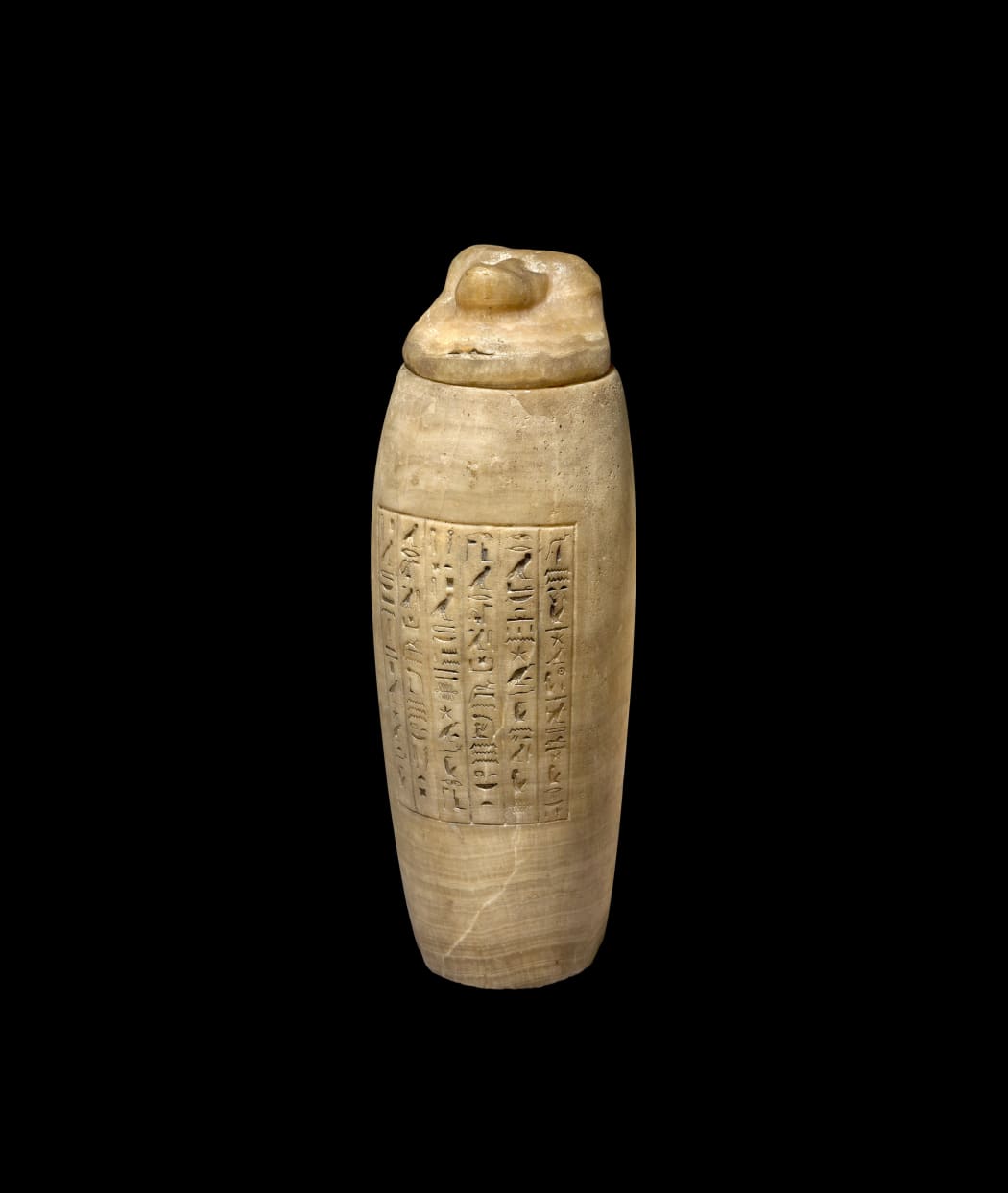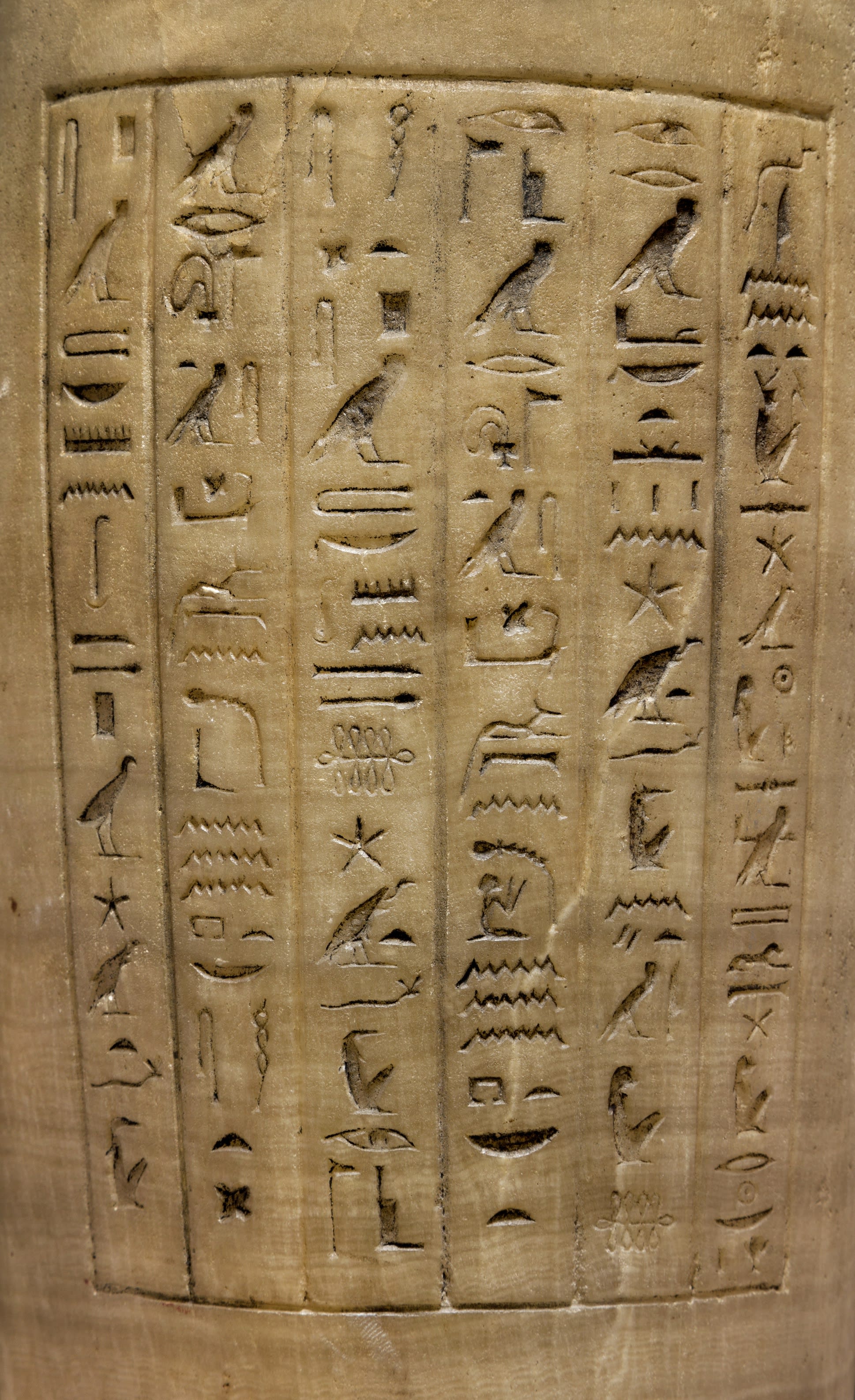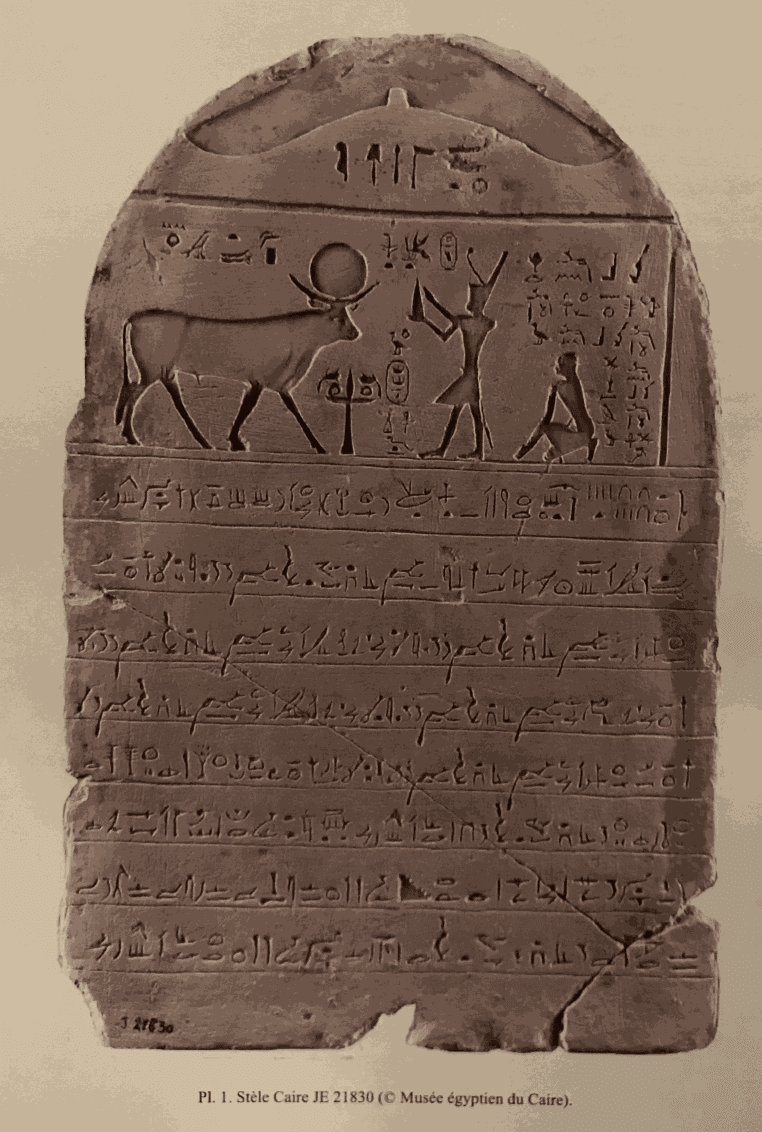The Priest with the Pleasant Smell

PROVENANCE
Giovanni Anastasi (1780 – 1860) Collection, Anastasi was Consul General of Sweden and Norway in Egypt from 1828-1857
François Lenormant Paris, 23 – 27 June 1857, p. 31, no. 234.
With Kalebjian Brothers, Paris, 1952
French private collection
Canopic jars were a significant part of the funerary traditions of Ancient Egypt. During mummification of the body, the organs were removed and separately mummified. In most periods of Pharaonic Egypt, the organs were placed in a set of four containers known as canopic jars which would then be interred in the tomb alongside the body. From the New Kingdom onwards, these jars had lids in the shape of funerary gods called the four Sons of Horus, whose job it was to protect the internal organs, alongside a specific goddess for each organ. The human-headed Imsety was the guardian of the liver, with the goddess Isis; the baboon-headed Hapy for the lungs, with the goddess Nephthys; the jackal-headed Duamutef for the stomach, with the goddess Neith; and the falcon-headed Qebehsenuef for the intestines, with the goddess Selket.

DETAIL OF AN EGYPTIAN WOOD PANEL
Depicting the Lady Meresimen, Singer of God Amon, giving presents to Osiris and the 'Four Sons of Horus'
25th Dynasty, circa 715-656 BC
The Louvre, Paris, inv.no. N4024
There are similar sets of Late Period alabaster canopics with extensive inscriptions in the Louvre and in Leiden but not with such fascinating or beautifully carved epigraphy. The subject and its titles, in addition to its excellent provenance, make this jar a rare and beautiful work. The location of the other three canopics from the set, appear to be lost thus far. A similar quality jar belonging to the Princess Tasheretenaset, Daughter of King Amasis was sold at auction a few years ago. The details of the inscription on Psamtik-men’s jar are more finely carved than on this royal jar, indicating the high status and wealth of Psamtik-men.

A SET OF 4 EGYPTIAN ALABASTER CANOPIC JARS
Late Period, circa 664-332 BC
Rijksmuseum van Oudheden, Leiden, inv.no. CI 278
(Copyright Rijksmuseum van Oudheden)
The jars were usually inscribed with columns of hieroglyphic text providing the name of the deceased as well as providing protective spells. This finely preserved alabaster jar was commissioned and carved for a man called Psamtik-men, with the title of Chief Embalmer, and a unique and intriguing additional title, The Priest with the Pleasant Smell.
The tall jar is composed of fine, banded alabaster, tapering slightly at the top and base. The jar preserves six columns of carefully and beautifully drawn hieroglyphs, engraved and enhanced with black pigment, of which a substantial amount remains.
The epigraphy and the quality of the text indicate a work of the Saite period. However the text gives a version of the 19c canopic formula, which according to Sethe (K. Sethe, ‘Zur Geschichte der Einbalsamierung bei den Ägyptern und einiger damit verbundener Bräuche’, SPAW, Berlin, 1934, p. 12) is rare on canopics of the 26th dynasty.

Words spoken by Neith, I spend the morning and night each day to ensure the protection of Duamutef which is in me, the protection of Osiris, the chief chancellor of the god, the sem-priest, the embalmer, the attendant of the secret things of each ouabet, (the place of embalming), the nejem-seti priest (priest of the pleasant smell), Psamtik-men, true of voice; the protection of Duamutef, the Osiris, the chief chancellor of the god, the sem-priest, the embalmer, the attendant of the secret things of each ouabet, (the place of embalming) the nejem-seti priest (priest of the pleasant smell), Psamtik-men, true of voice; it is Duamutef.
The inscription, with its unusual titles, is fascinating. Olivier Perdu has highlighted the rarity and curious meaning of the final title ndm-sti, which appears specific to Memphis in the Late Period, allowing us to connect Psamtik-men to this city. This suggests that he was buried in Memphis andthat his canopic is probably also from the necropolis of Saqqara.
Psamtik-men’s titles all indicate that he was an active and very important individual in the embalming and funerary process. A wonderful and apt feature given that the inscription is actually on a canopic jar. The first title is ‘chief chancellor’ which indicates he was the head embalmer; the second title, that of the sem priest which refers to the principal performer of the ritual of the opening of the mouth; the third title refers to his being in charge of the actual wrapping of the strips; the fourth title is for ‘the attendant of the secret things of each ouabet’, which refers to the place of embalming. The fifth and final title - the chief subject of Olivier Perdu’s study – is the nejem-seti priest (priest of the pleasant smell).

In his research on the Kallos canopic jar, Perdu points out the above limestone stela (JE 21830) in Cairo, dated to the year XXXVII of Chechong V, which also mentions our title. The stele was found by A. Mariette in the Serapeum of Saqqara, and is dedicated by a certain Änkhefenkhonsou: Porter and Moss, III, 2, Oxford, 1981, p. 788.
This stele links the nejem-seti title to the god Anubis indicating that it is a title likely to be worn by embalmers related to the cult of Anubis, located in the Memphite region. These embalmers would have been based at a temple dedicated to Anubis and Perdu points to a likely location: a temple located in the northern part of the Saqqara cemetery where excavations have brought to light finds mostly dating to the Ptolemaic period.
At some point a baboon head (Hapy, another son of Horus) stopper was matched with the jar, which would originally have been surmounted with a jackal head stopper representing Duamutef as indicated by the inscription.
This canopic jar is a remarkable rediscovery of an extremely fine and important vessel. The alabaster has been carefully chosen with very attractive banding and it has been beautifully inscribed with a substantial amount of excellently preserved text. Indisputably the very rare title of the nejem-seti priest (priest of the pleasant smell), is the most important aspect of this jar. This distinctive and mysterious title has allowed Perdu to reconstruct who Psamtik-men was and where he operated as the chief embalmer.
With thanks to Olivier Perdu for his expertise in cataloguing this piece.
PUBLICATIONS
François Lenormant, Paris, 23-27 June 1857, p. 31, no. 234.
S. Sauneron, ‘Le “chancelier du dieu” dans son double rôle d’embaumeur et de prête d’Abydos’, BIFAO 51, 1952, p. 149, no. 2.
O. Perdu, ‘Le Prêtre, A l’odeur agréable’, in Textes réunis et édités par Fl. Doyen, R. Preys & A. Quertinmont, Sur le chemin du Mouseion d’Alexandrie. Études offertes à Marie-Cécile Bruwier, CENIM 19, Montpellier, 2018, pp. 229 – 251.
A copy of the Lenormant 1857 sale catalogue in the library of the Egyptian Antiquities Department of the Louvre Museum preserves a sheet of annotations by Theodule Devéria (1831-1871) recording the inscription on this jar. This is noted by Sauneron in his study on the title btmw-ntr: S. Sauneron, ‘Le “chancelier du dieu” dans son double rôle d’embaumeur et de prête d’Abydos’, BIFAO 51, 1952, p. 149, no. 2.